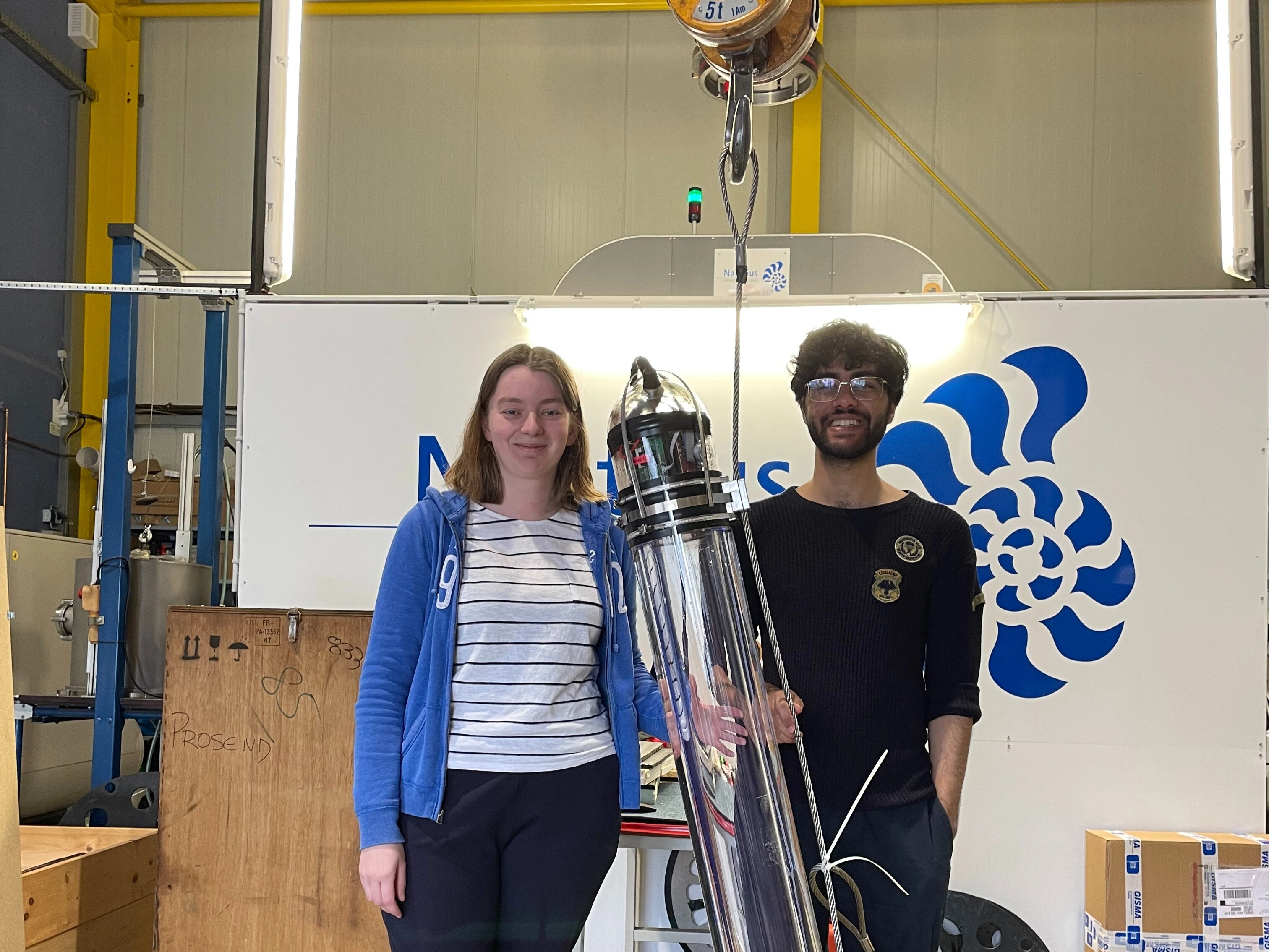Successful pressure tests of the WOMs for the IceCube upgrade
Nautilus Marine Service GmbH has recently successfully completed the pressure tests for the wavelength-shifting optical modules (WOMs) that will be deployed in Antarctica as part of the IceCube upgrade. The tests are a crucial step in preparation for the installation of the new IceCube upgrade in the Antarctic summer of 2025/26.
IceCube is a neutrino detector with a volume of one cubic kilometer installed deep in the Antarctic ice near the South Pole. The aim is to measure so-called neutrinos - extremely light, uncharged elementary particles that are produced during astrophysical processes such as supernovae. For this purpose, over 5,000 optical sensors are installed at depths of up to 2,500 meters in the clear Antarctic ice, which are used to measure the so-called Cherenkov light that is produced during a neutrino interaction.
As part of the upcoming upgrade, 750 additional modules will be installed to significantly increase the sensitivity of the detector. One of these modules, which will be installed in a quantity of 11 units, is the so-called WOM (wavelength-shifting optical module) - a light-sensitive module developed by the Universities of Mainz, Wuppertal and Uppsala. Inside, a special coating ensures that UV light is absorbed and reemitted at a higher wavelength - a property that makes the WOM particularly sensitive to ultraviolet light.
The extreme environmental conditions in the Antarctic - temperatures down to -40 °C as well as high pressure due to the depth and refreezing of the borehole - place special demands on the components used. The pressure tests carried out at Nautilus are therefore essential to ensure the mechanical resilience of the WOMs. The WOMs were tested with a pressure of up to 700 bar - a test that they passed successfully.
Nautilus used specially manufactured pressure housings made of quartz glass for the WOMs. The successful tests confirm the suitability of the final module versions for demanding use in ice. The tests were carried out and supervised by Lea Schlickmann and Adam Rifaie from Nautilus Marine Service GmbH, who played a key role in the successful implementation.
Nautilus has been supporting the IceCube project for many years with its expertise in high-pressure technology. In addition to the WOMs, other module types such as the mDOM from DESY Zeuthen have been and are being tested at Nautilus for their pressure resistance. Nautilus has tested various prototypes in several development phases - the tests that have now been completed mark the successful conclusion of this development work.
Nautilus is also looking forward to working with IceCube researchers on future IceCube-Gen2 detectors, which will incorporate additional optical sensors in the ice. IceCube-Gen2 is a planned expansion that will increase the detector volume from 1 km³ to around 8 km³ in the long term.

Left: Lea Schlickmann Right: Adam Rifaie

